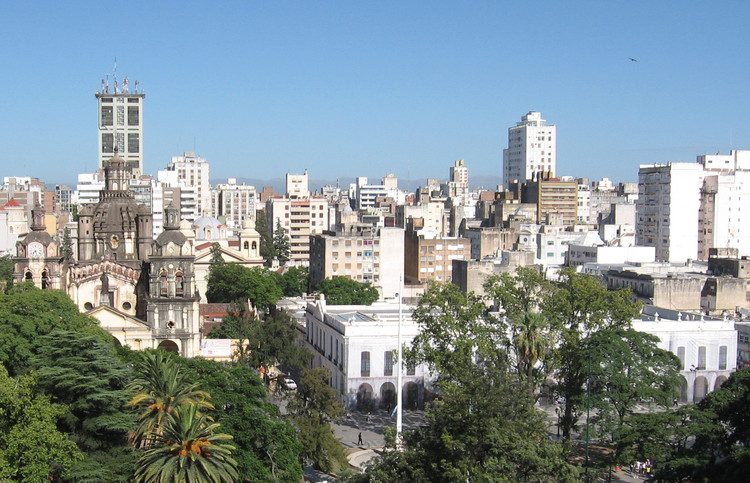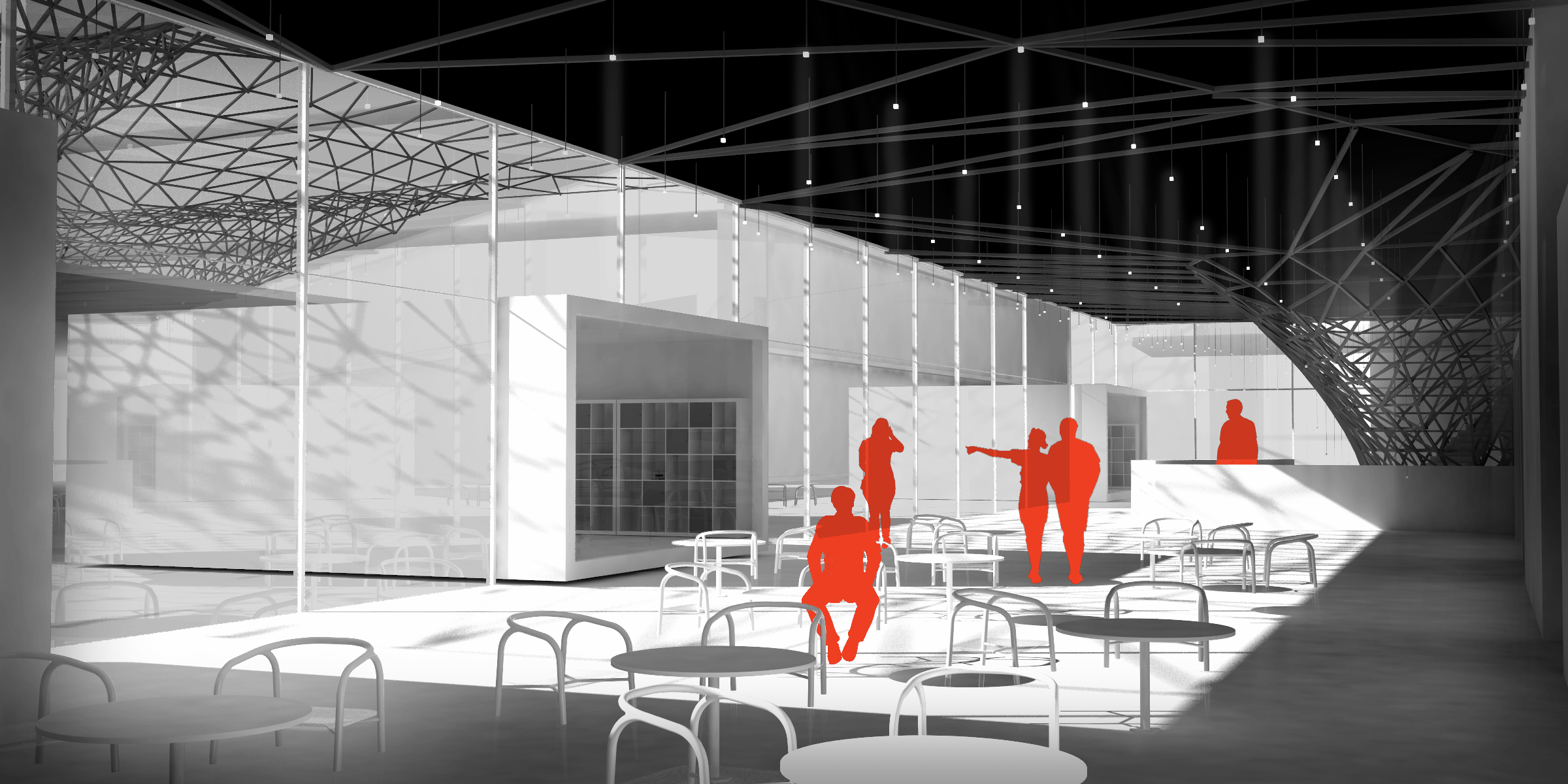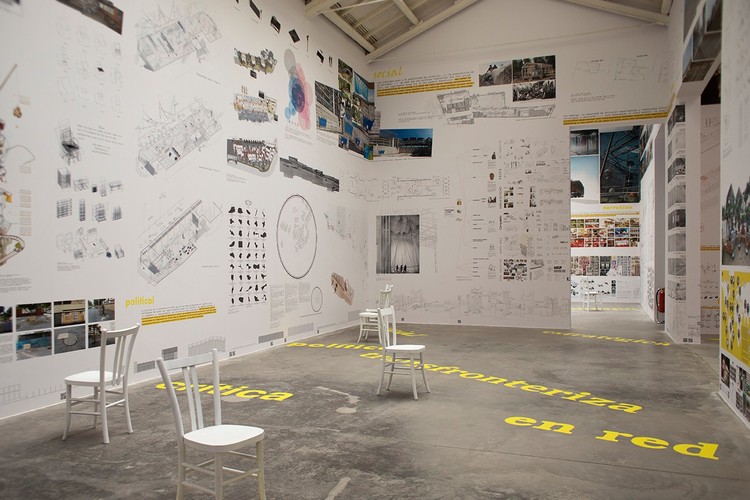_exhibition.jpg?1530836440)
YACademy launches Architecture for Exhibition, a high-level training course offering 8 scholarships and internships in internationally-renowned architectural firms.

_exhibition.jpg?1530836440)
YACademy launches Architecture for Exhibition, a high-level training course offering 8 scholarships and internships in internationally-renowned architectural firms.

Architects are always trying to be more efficient and adding more value for clients. But with most software, rendering is very time-consuming, impairing efficiency significantly. It is exhausting for designers when the process of visual processing uses energy that would be better invested in design and architecture itself.
With the Enscape plugin, real-time rendering and virtual reality can help to remedy this situation. The plugin integrates as a toolbar in the popular design platforms Rhino, Revit and SketchUp, with a version for Archicad also currently in development. Because the software is a plugin for these popular programs, architects do not need to learn to use new software, but work in their familiar system with some additional features. And since the software runs on the local graphics card, projects do not have to be uploaded to the cloud.

If you’re reading this post then it's likely that you are either an architect, or you’re dating one. If you belong to the former group, we salute you and all your hard work. But if you belong to the latter, this list might serve as a reminder of how lucky you are to be with somebody with the unique talents and traits of the architect—and that's not to mention the obvious fact that you could end up living in a beautiful house with the most beautiful furniture.

A decade ago, a wave of striking architecture invaded major Chinese cities as the country prepared for the 2008 Beijing Olympics and 2010 Shanghai World Expo. Internationally renowned architects proposed and developed over-the-top structures, which soon became new symbols of the country. These iconic buildings helped mark Beijing and Shanghai as the major entry points to China, but as time progressed, the phenomenon spread to other, lesser-known Chinese cities. As these "second tier" cities thrived, their governments wanted to improve living standards and develop their own trademark, resulting in new theaters, stadiums, schools, and office towers.
Having focused on Beijing and Shanghai in his first series of photographs, Kris Provoost has continued his "Beautified China" series with a deeper look at buildings in 12 Chinese cities throughout the country, from Harbin to Hong Kong. The project continues under the same premise: 20 minimalist photos taken over the past 8 years of striking architecture built in the last decade.

Through his extensive research, inventions and structural experiments, Buckminster Fuller created the term tensegrity to describe "self-tensioning structures composed of rigid structures and cables, with forces of traction and compression, which form an integrated whole" [1]. In other words, tensegrity is the property demonstrated by a system that employs cables (traction) and rigidity of other elements (usually steel, wood or bamboo) capable of acting under the intrinsic stresses (traction and compression) together and simultaneously, giving greater resistance and formal stability. It creates an interconnected structure that works biologically like muscles and bones, where one element strengthens the other.

Located in the central region of Argentina, the historic city of Córdoba is the second most populated city in the country; which means it can be considered an important center for culture, education, and finance. Its dense historic center is characterized by the presence of brick -a product of the work of Togo Díaz- and the particular landscape that links the urban with the natural, resulting in an exclusive atmosphere that invites us to walk its streets.
The characteristic culture of Córdoba is evident in its urban public spaces, its natural streams and its pedestrian areas; where one can appreciate the heterogeneity of classical, modern and contemporary architecture. Below is a list of 15 sites that every architect should visit.

When we think of public housing architecture in the United States, we often think of boxes: big, brick buildings without much aesthetic character. But the implications of standardized, florescent-lit high-rises can be far more than aesthetic for the people who live there. Geographer Rashad Shabazz, for one, recalls in his book Spatializing Blackness how the housing project in Chicago where he grew up—replete with chain link fencing, video surveillance, and metal detectors—felt more like a prison than a home. Accounts of isolation, confinement, and poor maintenance are echoed by public housing residents nationwide.
But American public housing doesn’t have to be desolate. A new set of design standards from the New York City Public Design Commission (PDC)—in collaboration with The Fine Arts Federation of New York and the American Institute of Architects New York Chapter—hopes to turn over a new leaf in affordable housing architecture.

Throughout history, architects have used sketches and paintings to display to their clients the potential outcomes of the projects rattling around their minds. Since Brunelleschi’s adoption of drawn perspective in 1415, architectural visualizations have painted hyper-realistic imaginings of an ideal, where the walls are always clean, the light always shines in the most perfect way, and the inhabitants are always happy.
With technological advances in 3D modeling and digital rendering, this ability to sell an idea through a snapshot of the perfect architectural experience has become almost unrestricted. Many have criticized the dangers of unrealistic renderings that exceed reality and how they can create the illusion of a perfect project when, in fact, it is far from being resolved. However, this is only the natural next step in a history of fantastical representations, where the render becomes a piece of art itself.
Below is a brief history of the interesting ways architects have chosen to depict their projects—from imagined time travel to the diagrammatic.
.jpg?1527355326)
As part of our 2018 Venice Architecture Biennale coverage, we present the completed Argentinian Pavilion. Below, the curatorial team describes the exhibition in their own words.
Horizontal Vertigo, Argentinian Pavilion at the Venice Biennale 2018, delves into the notions of humanity and democratic spirit as proposed by Freespace, by establishing a cross-cutting dialog between geography, place, and architecture.
The exhibition, curated by the architects Javier Mendiondo, Pablo Anzilutti, Francisco Garrido and Federico Cairoli, is an invitation to rethink our territory as a collective construction and discover architecture in its capacity to convey unexpected generosity in every project.

This article was originally published by The Architect's Guide.
So I won't make you wait for the answer. The best time to look for an architecture job is...

The story of Berlin’s Tempelhof Airport never quite ends.
Located just south of the city’s hip Kreuzberg neighborhood and only fifteen minutes by bike from the city center, the disused former Nazi complex—with its terminal, hangars, and massive airfield—occupies nearly 1,000 acres of prime real estate in the ever-growing German capital. In any other metropolis, this land would have been snatched up by a developer years ago, but in Berlin, creative reuse has prevailed over conventional narratives of redevelopment.

Following natural disaster or conflict, architecture plays a critical role in not only reconstructing lost infrastructure but also responding to the need for comfort and safety for those affected. Successful post-disaster architecture must meet both the short-term need for immediate shelter, as well as long-term needs for reconstruction and stability. Eight years after the 2010 Haiti earthquake, those displaced continue to reside in temporary shelters without adequate access to plumbing and electricity, revealing the critical importance of addressing long-term needs after disaster and conflict.
Below, we've rounded up 10 impressive examples of post-disaster architecture that range from low-cost, short-term proposals to those that attempt to rebuild entire communities from the ground up:

108 hours of lessons, a 60-hour workshop and internships/lectures held by internationally-renowned architectural firms like Foster+Partners (London), Studio Libeskind (New York) Partisans (Toronto) Emmanuelle Moureaux Architecture+Design (Tokyo) Dejaco+Partner (Bolzano) Alberto Apostoli (Verona) Veneziano+Team (Milan) Matteo Thun & Partners (Milan).

Neri Oxman and MIT have developed programmable water-based biocomposites for digital design and fabrication. Named Aguahoja, the project has exhibited both a pavilion and a series of artifacts constructed from molecular components found in tree branches, insect exoskeletons, and our own bones. It uses natural ecosystems as inspiration for a material production process that produces no waste. “Derived from organic matter, printed by a robot, and shaped by water, this work points toward a future where the grown and the made unite.”

Capable of transforming a facade or shaping a sculptural roof form, tensile structures test the limits of our imagination (and understanding of geometry). This week’s photo set features structures that rely on cables, anchors, posts and membranes to create expansive, dramatic spans of open space bathed in natural light. Stark shadows and fair curves make tensile structures particularly photogenic, as captured in this set of images from Christopher Frederick Jones, Marie-Françoise Plissart, Yoshihiro Koitani and more.
As architects, we all have a 'thing' for walls, windows, and everything in-between. The aptly named Instagram account @ihaveathingforwalls celebrates the beauty of walls—the peeling, the painted, the colorful, the dilapidated. As a curated selection of submissions from their followers, the page displays photographs of walls from Warsaw to Hong Kong; snapshots of beauty from everyday life.
Take a tour of walls across the globe below, and feel inspired to pay a little more attention to the surfaces around you:

As self-driven cars are being introduced to our city streets and tech companies have expanded their influence far beyond the boundaries of our computer and smartphone displays, a new generation of architects are charged with imagining how to employ the technology of tomorrow in ways that will advance and improve the world’s built environments. With autonomous transportation, virtual and augmented reality and artificial intelligence promising unprecedented tools for revolutionizing human infrastructure in a future that no longer feels particularly distant, present-day data gathering and analysis capabilities have already transformed our ability to understand trends on an unforeseen scale.
Taking full advantage of modern data science capabilities and semi-automated robotic technology currently deployed in factory settings around the world, Masters candidate Stanislas Chaillou from the Harvard GSD imagines how today’s new tech could help realize the longtime architectural ambition of creating flexible buildings capable of adapting to variable uses.

The late British architect Will Alsop was noted for his exuberant and irreverent attitude that took material form in his expressive, painterly portfolio of educational, civic, and residential works. At the ripe age of 23, he was awarded second place in the 1971 Centre Georges Pompidou. From there, he went on to work for the ever humorous Cedric Price before establishing his practice with John Lyall, and eventually many others, in the early 1980s. With a career spanning almost fifty years, here are ten iconic works from an architect who never missed an opportunity to play.

As part of our 2018 Venice Architecture Biennale coverage, we present the completed Spanish Pavilion. Below, the curatorial team describes the exhibition in their own words.
Becoming, the Spanish Pavilion at the Venice Biennale 2018, seeks to respond to the general theme of the event through the proposals and research being developed in the different learning environments within the country, placing special emphasis on the architect's new multidisciplinary profile.
The exhibition, curated by the architect Atxu Amann, has occupied most of its budget in restoring the building in which it is located, "tattooing" its interior walls to load them with 143 proposals that are unified through 52 relevant concepts to our discipline today.

Which building is better, the duck or the ornamented shed? More importantly, what kind of architecture does the average American prefer? In their landmark 1972 publication Learning From Las Vegas, Denise Scott Brown and Robert Venturi probed these questions by turning their back on paternalistic modernism in favor of the glowing, overtly kitsch, and symbolic Mecca of the Las Vegas strip. From a chance encounter during a meeting in the Library of Fine Arts at the University of Pennsylvania and shared trips to the strip to critically shaping a new generation of architects, discover the hidden details of the romance and city that defined postmodernism in this latest episode from 99% Invisible.

Since the publication of “Keep Talking Kanye: An Architect’s Defense of Kanye West” I have become an unwilling Kanye apologist. Each time he produces music that tempts us to use the moniker “creative genius” he quickly follows with an interview or tweet that makes him look like anything but. Invariably thereafter, a chain of text messages and emails with titles like “just to irritate you” or “come get your boy” begin to flood my inbox. My standard response is often no different from SNL’s Michael Che on Weekend Update: when presented with a headshot of Kanye and the caption “slavery was a choice” the comedian shakes his head and states simply, “Pass!” However, now that Kanye has once again entered the sphere of architectural discourse with a proposed new endeavor called “Yeezy Home” I am compelled to intervene once again with a more direct “put up or shut up” message.

When Walter Gropius created his renowned school of design and arts in 1919, he devised it as a place open to "any person of good reputation, regardless of age or sex," a space where there would be "no differences between the fairer sex and the stronger sex." His idea occurred in a period when women still had to ask permission to enter fields that were once off-limits. If women received an artistic education, it was imparted within the intimacy of their home. But at the Bauhaus and the Gropius school, they were welcome and their registration was accepted. Gropius' idea was so well-received that more women applied than men.